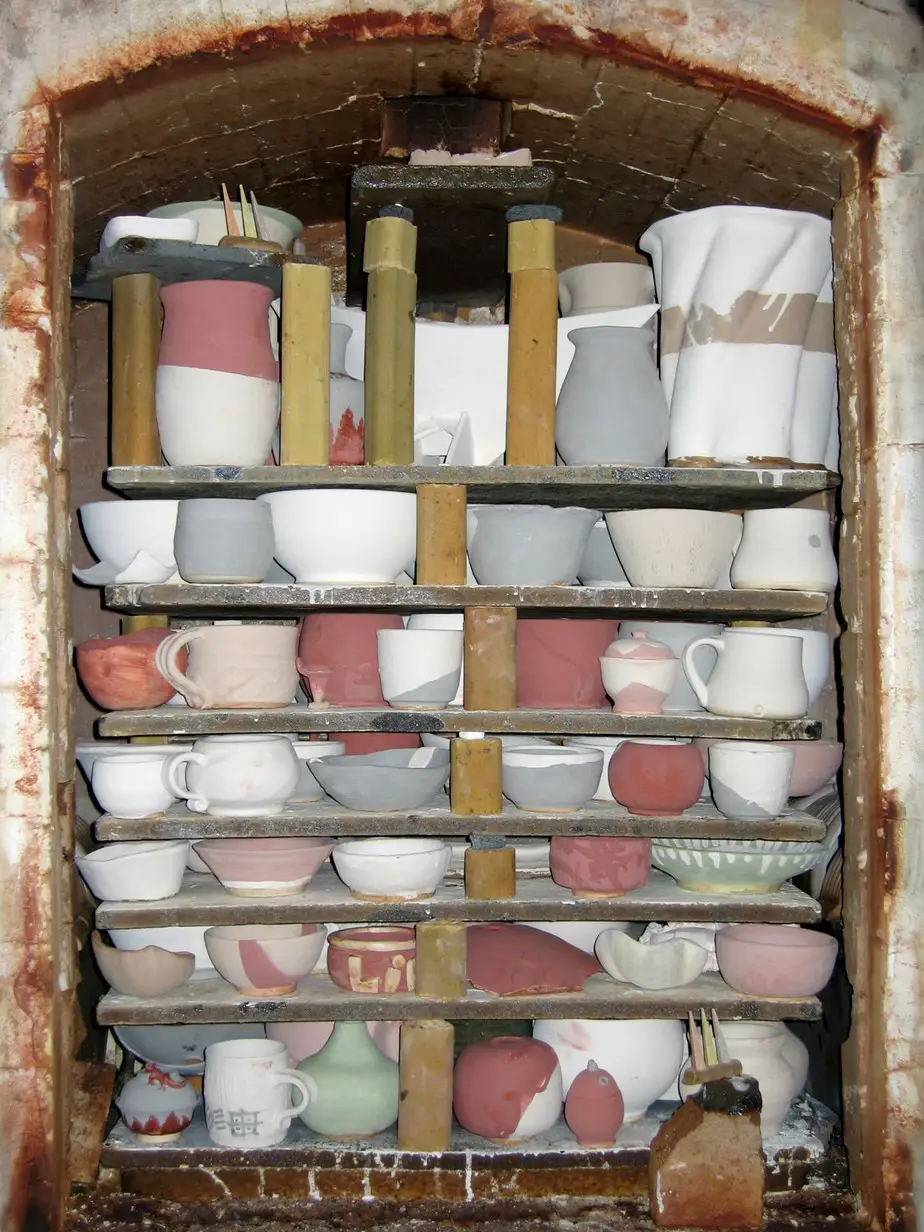When firing a piece of pottery art, you need to know a lot about the process to acquire and master this skill. When it comes to firing your pottery to achieve the best result, you need to know various factors regarding the process.
In case you are a newbie in pottery making, you must have come across the terms of reduction and oxidation. But do you know what they mean? Usually, the terms oxidation and reduction refer to the amount of oxygen present during firing. Unlike the oxidation range, the reduction atmosphere comes with a reduced amount of oxygen in the kiln.
Well, the reduction phase can affect your pottery by changing the texture of your clay. Thus, you need to know precisely what reduction firing is in the world of pottery so that you can offer a very even and proper firing to your pottery piece. Here is what you need to know about it.
What is reduction?
Usually, oxygen is the most crucial component for firing. Thus, firing needs oxygen for burning. In case there is a lack of oxygen, the fuel is not going to burn correctly. The atmosphere of the kiln becomes filled with a free amount of carbon. Usually, the free carbon will take place forcibly with any other kind of oxygen atom, as it finds any.
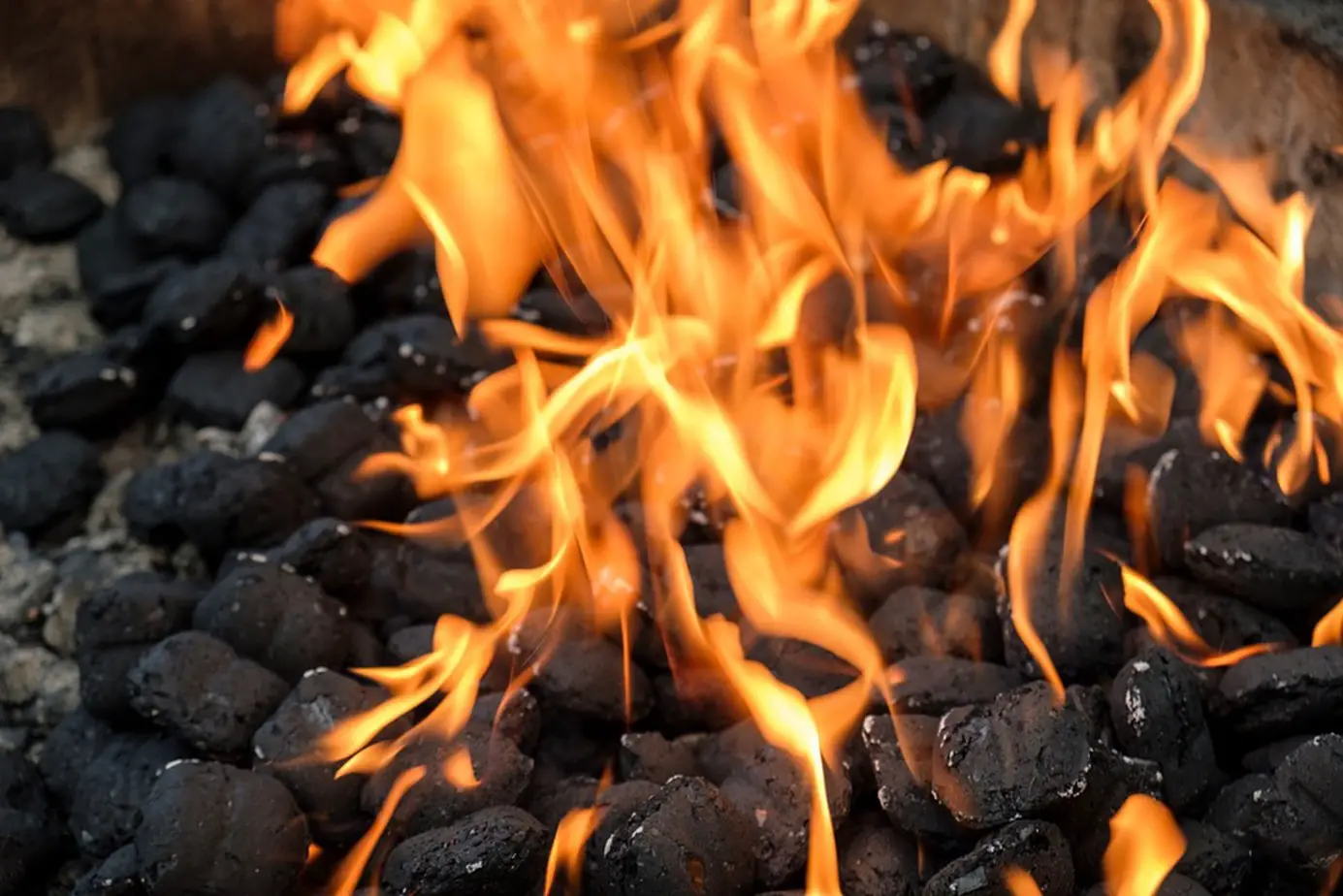
The carbon atoms usually tend to grab the oxygen, which enables them to break the molecular bonds. The carbon is going to grab the clay and glaze materials for the oxygen. As carbon reduces the oxygen amount present in the clay and its glaze materials, it changes the clay’s color and texture. It can also change the glaze.
For what kind of firing reduction is appropriate?
Many potters prefer reduction firing as it can produce different colors and alluring effects on the pottery surface. As the metallic oxides give up on the oxygen conversion for reducing their metallic form, it leaves a new and beautiful effect on the pottery.
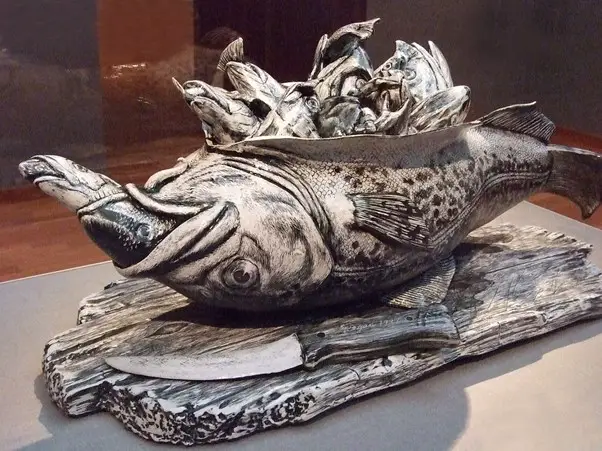
The visual effects that the reduction range offers come with a variety of uniqueness that is often tough to acquire with the oxidation range.
Many potters prefer to fire their gas kiln with the reduction range for the body and glaze reduction range. The reduction firing comes with cone 06 and happens up to the end. So, make sure to use top-notch quality clay and glaze, which goes compatible with the firing range you have opted for. In the case of pottery clay, you can pick AMACO High Fire Moist Non-Toxic Stoneware Clay as it offers excellent results after performing the reduction firing at cone 06.
Also, some of the potters prefer reduction firing for cleaning the atmosphere to soak the glaze for treating bubbles, which results in volatilization with the reduction inducing. Moreover, sometimes the potters prefer the color breaking in the glaze, which results in reoxidation on the melting surface. And this renders the pot with beautiful effects.
How does the reduction firing affect your pottery piece?
The reduction firing for a pottery piece offers a vibrant, natural, and earthy shade for colors. Also, sometimes the reduction temperatures are used for achieving a speckled kind of appearance.
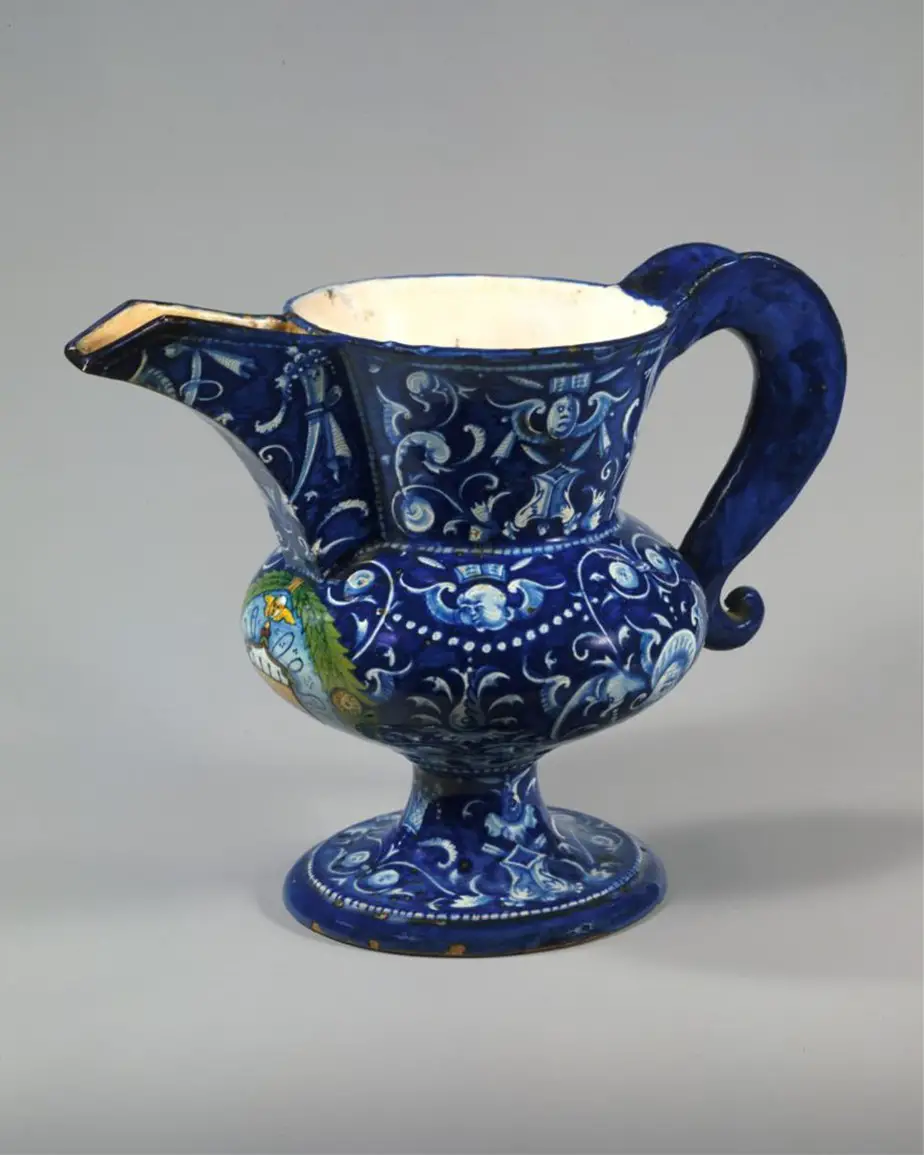
With the reduced atmosphere, the oxygen is drawn out of the clay and glazing. It helps in contributing to shaping the appearance of the pottery glaze.
Here are some of examples of how reduction range changes the color of your pot.
Oxides |
Effects after reduction |
Ferric oxide |
Black, green, and blue colors during the reduction process |
Celadon glazes |
Green-blue color |
Copper red |
Metal copper color |
Copper oxide |
Green color and dark brown |
How does reduction take place in your kiln?
Usually, the reduction firing is used for fuel burning within the kiln. The reduction process is famous for generating too many gases within the kiln that can damage an electric kiln.
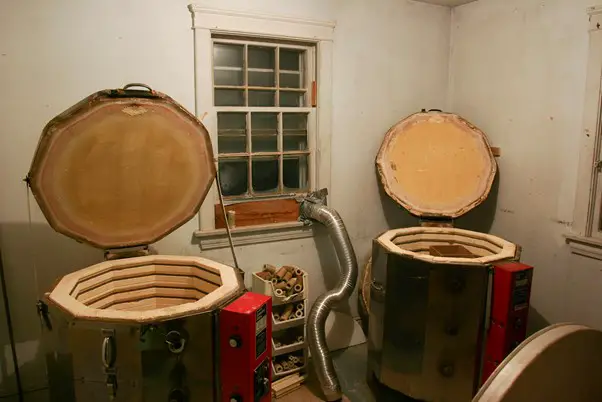
Thus, the reduction firing is recommended for the gas and fuel-burning kilns only. For creating an excellent reduction atmosphere in the kiln, the relative quantity of oxygen within the kiln is usually reduced. It is easy to do with the increasing presence of fuel in the kiln. Also, restricting the air can help in achieving the proper reduction.
During the period of combustion, the fuel usually turns into heating energy. In case there are two oxygen atoms, for each of the carbon atoms, all the fuel will turn into heat energy during the entire period of combustion.
But when the ratio of oxygen to carbon is less than 2:1, it will not proceed for complete fuel burning. In case there is not sufficient oxygen for converting the heat energy with carbon, it will be much more tricky.
In case this happens, the flames are going to become very long, smokey, and orange. Also, the rest amount of the carbon is going to convert into gases. These kinds of gases usually come with carbon monoxide and hydrogen.
Carbon monoxide usually looks for oxygen and comes back towards carbon dioxide. However, this hydrogen present in the kiln needs to be burnt evenly. In conclusion, the gases used in this reduced atmosphere will extract the oxygen out of the clay and glazing.
How do you switch between oxidation and reduction?
The oxidation and reduction firing both are the most critical parts of pottery firing. However, to become skilled enough as a potter knowing how to switch between will help you in various ways. Here are some of the tips that you can follow for maintaining the easy switch between oxidation and reduction:
- It is better to create the reduction temperature in your kiln during the last stage of firing before you off the kiln.
- If you start with an oxidation range in your kiln, then maintaining the reduction for a couple of points in between the firing will help you get consistent results.
- During the end of the reduction, it is better to keep the kiln in oxidation. It is going to help you to clear the atmosphere of the kiln. Also, it is useful for removing the bubbles from the surface area of the glaze caused due to reduction.
What type of kiln is suitable for the reduction firing process?
When it comes to reduction firing your pottery within a kiln, the type of the kiln is much of important. Based on the type and functionality of a kiln, you can decide how your reduction firing for pottery will take place.
For reduction firing, the most anticipated kiln types os the gar or fuel-burning kilns. Usually, the kilns come with various elements and equipment; a wrong firing range can damage the kiln’s entire functionality. The reduction range comes with some corrosive effects, damaging the various elements present in an electric kiln. During the reduction firing, the oxygen is restricted to interact with the glazing during the maturation. Thus, it results in much smoke and gases, which can affect the kiln functionalities.
Is it possible to do reduction firing within an electric kiln?
It is not impossible to execute the reduction firing in an electric kiln, but it can ruin the kiln quality. Reduction firing in an electric kiln is not at all safe. You can also lead towards the damaging of the kiln elements with too many gases. Thus, it is better to skip the electric kilns for reduction firing.
However, if you are skilled enough and have an advanced featured kiln, you can easily opt for reduced firing while following proper instructions.
How to reduce fire in your kiln?
If you are thinking of putting your kiln into reduction, you can easily do it by following a few simple methods. For putting your kiln in the reduction range, you need to place it close enough to the damper. You can also decrease the amount of primary air.
Then you have to opt for increasing the gas pressure to reduce the conditions. Also, ensure that you are getting the pressure back. Also, you can make sure that you are swimming the swirling of the gasses inside the kiln from the bottom area to achieve the proper amount of reduction.
The reduction reaction is impossible to take place during an ambient temperature. Thus, it must occur when the heating level allows the oxygen to link with the compounds for reduction. This particular heating level is easy to achieve during the rising temperature or the dissenting temperature while cooling.
The material you are planning for reducing must have a sufficient amount of permeability during gas reduction. Or else the effect is going to be available in a most uneven way.
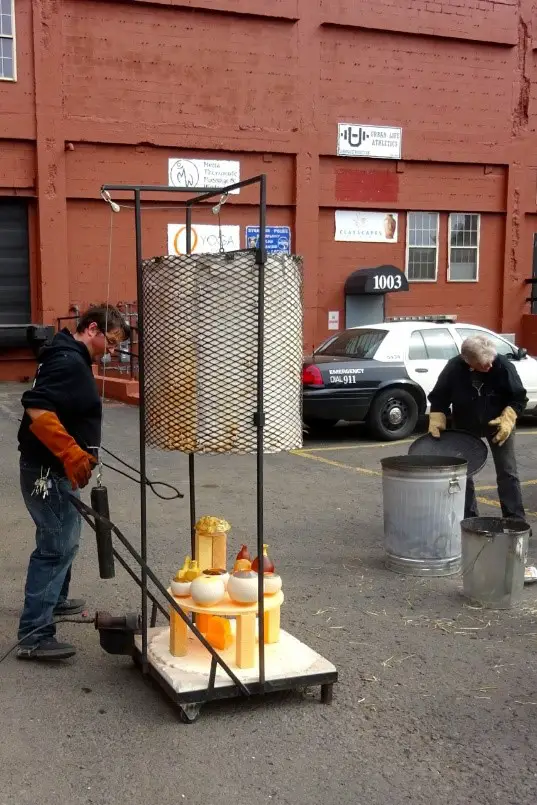
Thus, make sure you control the kiln atmosphere properly for producing a continuous gas flow for oxygen. Ensure controlling the temperature during the linking of the oxygen element, which can weaken the compounds during the reduction. Each of the reduction processes comes with its own deductibility level. The reduction action can be much more effective in targeting the energy level with more weakened compounds.
For the majority of traditional pottery firing, a variety of reduction firing is used. The principal gas for reducing range is usually carbon monoxide. You can easily create it with the reducing atmosphere in a kiln while reducing the combustion air or increasing fuel flow.
The reduction reaction is also easy to create using a smoky atmosphere that includes many carbon particles for converting oxygen. Usually, during copper oxide reduction, the copper metal is carried out during the fuming session for the raku firing. However, it is pretty much necessary to take place at the end when this treatment opts for quickly cooling the pieces.
If you are using the range of firing for the reduction, it is better to opt for a high temperature. Usually, the temperature between 1100°C and 1350°C is going to be appropriate for most stoneware and porcelain pottery pieces.
How reduction takes place in low temperatures?
The reduction is usually meant to take place at a higher temperature. However, the low-temperature reduction firing is also possible, but the effect will be a bit different. Usually, during the raku firing, the reduction is created outside of the kiln within a tight container, where the various pieces are introduced with organic matters like rags, sawdust, etc.
During burning, these organic temperatures consume the oxygen and produce carbon monoxide and carbon, extracting the glaze’s oxygen.
How does reduction perform under different conditions?
The variety of conditions has its own impact on the reduction results, which is very important to know to achieve the proper effects.
Here is how the process of reduction performs under two different conditions.
Reduction condition |
How it performs? |
Smoking |
Smoking usually gets produced during the extreme period of reduction and the end of the firing process. It denotes the deprivation of the saturation of oxygen in the atmosphere with the unburnt carbon. Besides, the black smoke produced leaves an effect on the pottery piece’s surface during reduction. |
Blueing |
The bluing operation is usually followed for archiving the metallic look on the pottery piece while reduction is happening. The compounds like iron carbide and graphite contribute to the blueing, which leaves a unique effect on the pottery’s surface. Usually, moisture and vapor’s presence during fuel decomposition opts for fast cooling and leaves a remarkable effect on the pottery surface. |
Conclusion:
Unlike the oxidation range for pottery firing, the reduction range is quite complicated and takes much of your practice to achieve the proper results. Thus, knowing in detail about the reduction firing is merely going to help achieve the beautiful effects at the end of your pottery firing. Make sure you are using the right kiln for your pottery firing.
We recommend using any gas or fuel kiln that works with perfection when working with your reduction range. Also, ensure that you do not expose yourself much to direct smoke or gas as it is very much toxic. Ensure you are using a mask while working with the reduction firing range for your pottery firing inside a kiln.

